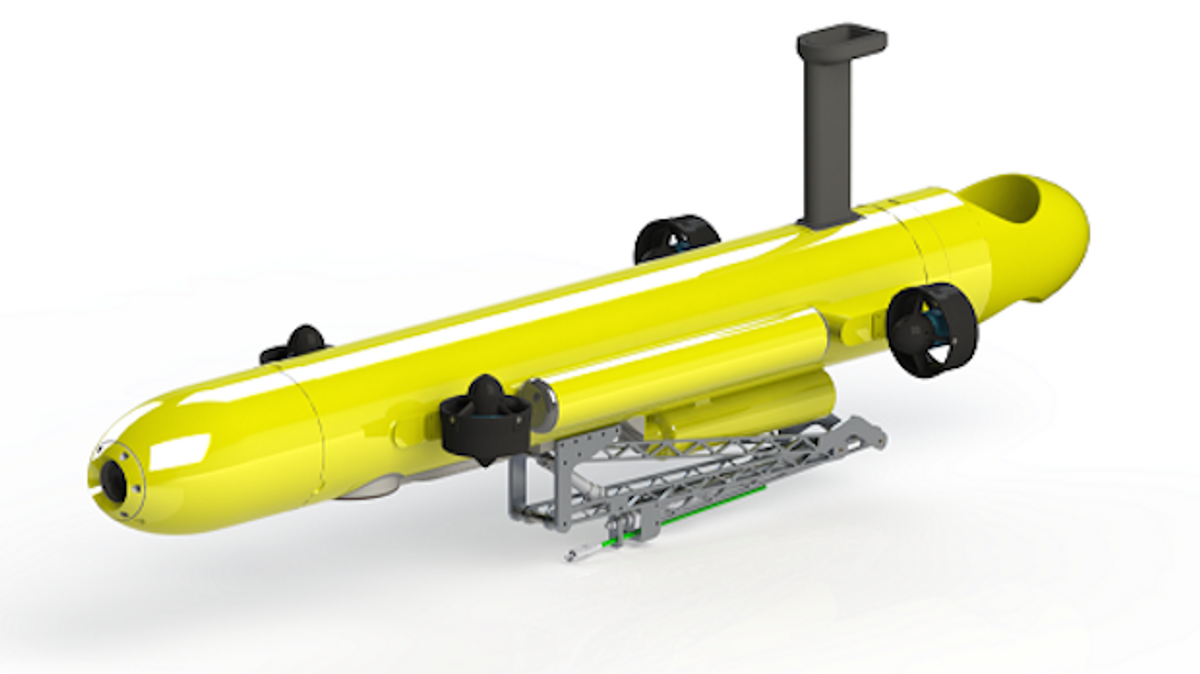You might think that the biggest threat to the world’s coral reefs is humanity. And you’d be right, of course: climate change, pollution, overfishing, and scuba divers who have no idea where their fins are all contribute to coral reef destruction. There are other, more natural but no less worrisome causes as well, and one of those is the crown-of-thorns sea star. It’s big, it’s spiky, and it eats coral for breakfast, lunch, and dinner.
Population explosions of these sea stars can devastate entire reefs, and it’s not unheard of to see 100,000 crown-of-thorns sea stars per square kilometer. There isn’t a lot that we can do to combat these infestations, because the sea stars can regenerate from absurd amounts of physical damage (they have to be almost entirely dismembered or completely buried under rocks), so humans have to go up to each and every sea star and inject them with poison 10 times over (!) because once isn’t enough.
Bring on the autonomous stabby poison-injecting robot submarines, please.

These infestations of crown-of-thorns sea stars (herein abbreviated COTSS) are only partially our fault: it’s true that we’ve been relentlessly overfishing the things that eat COTSS, and that’s a bad thing. However, the chief cause of COTSS population explosions seems to be correlated with rain over nearby land washing extra nutrients into the water, causing plankton blooms and making it easier for COTSS larvae to find food and grow up big and strong and spiky. Since one single large COTSS female can deliver upwards of 50 million eggs, even a modest boost to larvae survival rates can result in an enormous boom in mature sea stars.
When these outbreaks happen, swift and comprehensive eradication becomes a priority to keep reefs intact, but human divers can only manage to kill about 120 sea stars per hour with poison. Last year, a much more effective poison was developed at James Cook University in Queensland, Australia, called thiosulfate-citrate-bile salts-sucrose agar that can kill a COTSS in 24 hours after a single injection, causing “discolored and necrotic skin, ulcerations, loss of body turgor, accumulation of colourless mucus, loss of spines [and] large, open sores that expose the internal organs.”
Ew.
This one-shot poison (which is harmless to everything else on the reef) is what makes autonomous robotic sea star control possible, since it means that a robot can efficiently target individual sea stars without having to try and keep track of which ones it’s injected already so it can go back and repeat the process nine more times. At Queensland University of Technology in Australia, a group of researchers led by Matthew Dunbabin and Peter Corke spent the last decade working on COTSBot,* which has been specifically designed to seek out and murder crown-of-thorns sea stars as mercilessly and efficiently as possible.
COTSBot is a 30-kilogram yellow torpedo with a maximum speed of over 2 meters per second and an endurance of over 6 hours. Five thrusters give it the capability of briefly hovering in the water column, giving it time to attack crown of thorns sea stars with an integrated poison injection system. It’s completely autonomous, down to the identification and targeting of COTSS lurking among coral. Here’s the vision and injection system in action:
Previous research on image-based COTS detection has increasingly improved the detection accuracy of the system and its ability to run on-board modern lower power computers which can be installed within the space and power constraints of the underwater robot. The current COTSbot system is a significant further advancement that exploits state-of-the-art techniques in machine learning to achieve a detection performance of well over 99% whilst being able to operate real-time on-board the AUV.
It’s not expected that COTSBot will be able to murderize every single COTSS on a reef, but if a small fleet of COTSBots can deal with the majority of them over the course of days or weeks, it becomes much easier for human divers (and natural predators) to mop up the rest and keep the population under control.
“Robotic Detection and Tracking of Crown-of-Thorns Starfish,” by Feras Dayoub, Matthew Dunbabin, and Peter Corke, will be presented at IROS 2015 in Germany next month.
* COTSBot is an acronym for Crown-of-Thorns Starfish roBot. It really should be COTSSBot, because they’re sea stars (not fish), and if I didn’t point that out, my marine biologist brother would never let me hear the end of it.
Evan Ackerman is a senior editor at IEEE Spectrum. Since 2007, he has written over 6,000 articles on robotics and technology. He has a degree in Martian geology and is excellent at playing bagpipes.




